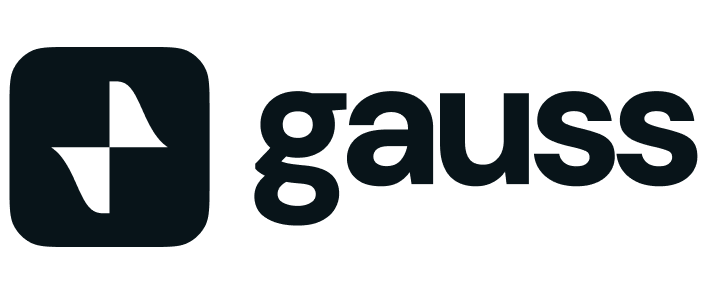Backdoor Roth IRA: What It Is and How to Set One Up

The realm of retirement savings can often appear complex and daunting, particularly to those new to the financial planning landscape. However, understanding the various tools available, such as the Backdoor Roth IRA, can significantly enhance an individual's retirement savings strategy. This article aims to demystify the concept of a Backdoor Roth IRA, detailing its benefits, steps to set one up, potential risks, and tax implications.
What is a Roth IRA?
A Roth IRA (Individual Retirement Account) is a special type of retirement savings account that offers tax advantages to its holders. Unlike traditional IRAs, contributions to a Roth IRA are made after taxes, meaning withdrawals during retirement are usually tax-free. This structure offers significant potential for tax savings, particularly for those who expect to be in a higher tax bracket during their retirement years.
However, it's important to note that not everyone is eligible to contribute to a Roth IRA due to income restrictions set forth by the IRS. These restrictions have led to the development of a workaround strategy known as the Backdoor Roth IRA.
The Concept of Backdoor Roth IRA
A Backdoor Roth IRA is a strategy employed by those who earn too much income to contribute directly to a Roth IRA. The idea is relatively simple: individuals make non-deductible contributions to a traditional IRA and then convert those funds to a Roth IRA. This method provides a "backdoor" entry into a Roth IRA, hence the name.
While the Backdoor Roth IRA strategy is perfectly legal, it carries with it certain complexities and potential pitfalls that potential investors should be aware of before proceeding.
Benefits of Backdoor Roth IRA
There are several benefits associated with the Backdoor Roth IRA strategy. Firstly, it provides a way for high-income earners to take advantage of the tax-free growth and tax-free withdrawals that a Roth IRA offers. This can be particularly beneficial for those who anticipate being in a higher tax bracket during retirement.
Secondly, unlike traditional IRAs, Roth IRAs have no required minimum distributions (RMDs). This means that investors can let their money grow tax-free for as long as they wish, offering additional flexibility in retirement planning.
Finally, the funds in a Roth IRA can be accessed more easily than those in a traditional IRA without incurring early withdrawal penalties, providing an additional layer of financial security.
Steps to Set Up a Backdoor Roth IRA
The process of setting up a Backdoor Roth IRA involves several key steps. Firstly, an individual must make a non-deductible contribution to a traditional IRA. This contribution is made with after-tax dollars and does not provide a tax deduction.
The next step is to convert the traditional IRA to a Roth IRA. This conversion can be done immediately after the contribution is made. It's important to note that while the conversion itself is not taxable, any gains made between the contribution and the conversion will be subject to income tax.
Lastly, the individual must file IRS Form 8606 with their tax return. This form reports non-deductible contributions to traditional IRAs and helps track the basis in the Roth IRA, which is necessary to determine the tax-free portion of future distributions.
Potential Pitfalls and Risks of Backdoor Roth IRA
While the Backdoor Roth IRA provides a potentially valuable workaround for high-income earners, it's not without its potential pitfalls and risks. One of the key challenges is the so-called "pro-rata rule," which can complicate the tax situation if the individual has other traditional, SEP or SIMPLE IRAs.
Another potential pitfall is the "step transaction doctrine." This IRS principle states that a series of steps designed to circumvent tax law can be collapsed into a single transaction. In the case of a Backdoor Roth IRA, this could potentially mean that the IRS views the contribution and the conversion as a single step, which could have tax implications.
Finally, there's always the potential for changes in tax law that might impact the viability of the Backdoor Roth IRA strategy in the future.
How a Backdoor Roth IRA Impacts Your Tax Situation
The tax implications of a Backdoor Roth IRA can be complex and are influenced by several factors. When handled correctly, the conversion from a traditional IRA to a Roth IRA is not taxable. However, this changes if the individual has any pre-tax dollars in their IRA at the time of conversion, due to the aforementioned pro-rata rule.
Additionally, any growth in the traditional IRA between the contribution and the conversion is subject to income tax. Therefore, it's often recommended to convert as soon as possible after the contribution to minimize potential tax liability.
Best Practices for Managing a Backdoor Roth IRA
Managing a Backdoor Roth IRA effectively requires careful planning and adherence to certain best practices. Firstly, it's important to understand the tax implications and potential risks associated with this strategy.
Regularly consulting with a tax advisor is recommended to ensure the strategy is being executed correctly and to stay informed about any changes in tax law that might impact the Backdoor Roth IRA.
Finally, it's important to keep meticulous records of all contributions and conversions. This will simplify tax filing and help to avoid any potential issues with the IRS.
Professional Services for Setting Up a Backdoor Roth IRA
Given the complexities associated with setting up and managing a Backdoor Roth IRA, many individuals choose to seek the help of professional services. Financial advisors, tax consultants, and retirement planning specialists can all provide valuable guidance and assistance in this area.
These professionals can help navigate the complexities of the pro-rata rule, assist with tax planning and record-keeping, and provide advice on the optimal timing for contributions and conversions.
Conclusion: Is a Backdoor Roth IRA Right for You?
The decision to set up a Backdoor Roth IRA ultimately depends on individual financial circumstances and retirement goals. For high-income earners who are ineligible for direct Roth IRA contributions, this strategy can provide a valuable opportunity to take advantage of the tax benefits associated with a Roth IRA.
However, due to the complexities and potential pitfalls involved, it's highly recommended to seek professional advice before proceeding. By understanding all aspects of the Backdoor Roth IRA, individuals can make informed decisions that best support their retirement savings goals.
Do you have unpaid credit cards?
Gauss money can help pay off your credit cards easily. Pay off any credit card balance using a low-interest credit line from Gauss. You’ll save with a lower APR and you can pay off balances faster. Gauss offers no annual fees, no origination fees, and no fees of any kind. Check out Gauss for a lower APR today to maximize your credit cards.
Additionally, use tools like the credit card payoff calculator to visualize your progress overtime, and get insights into how much you should put towards your debt to achieve your debt free date. Our debt payoff calculator and debt tracker is 100% free to use via our website or our mobile app.
